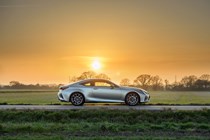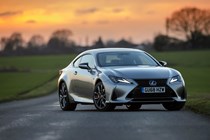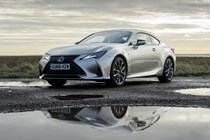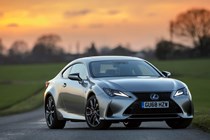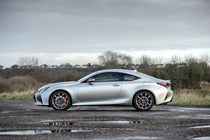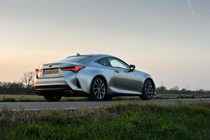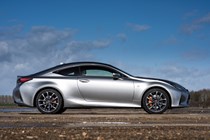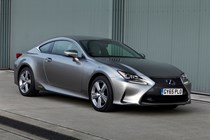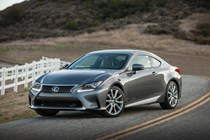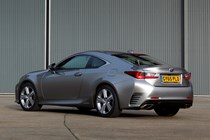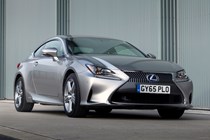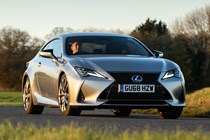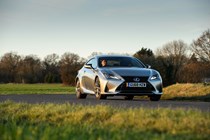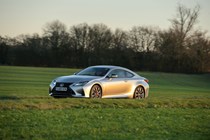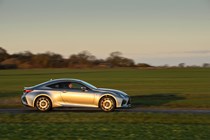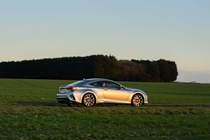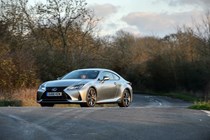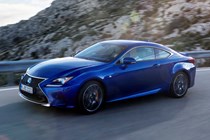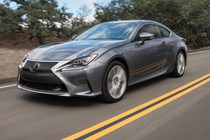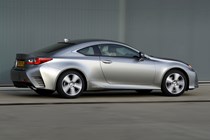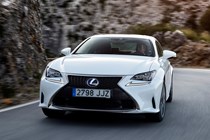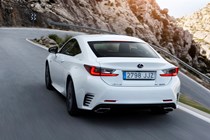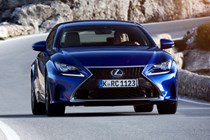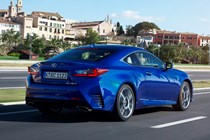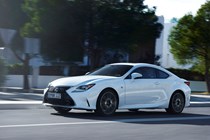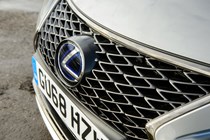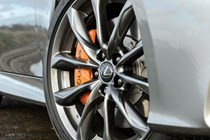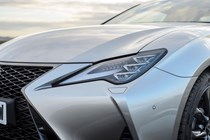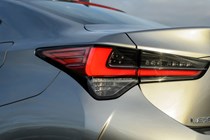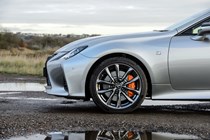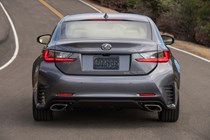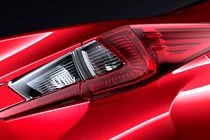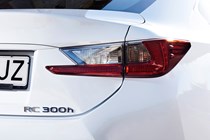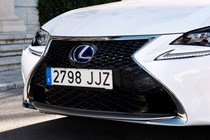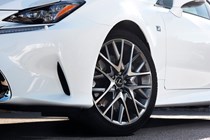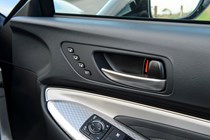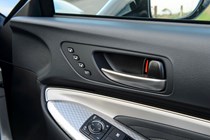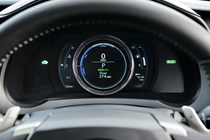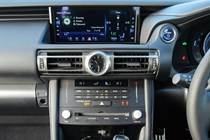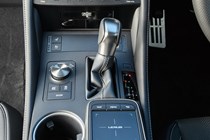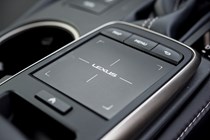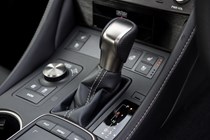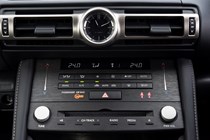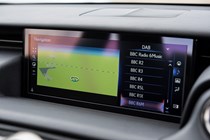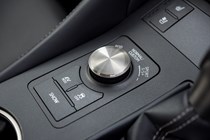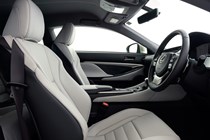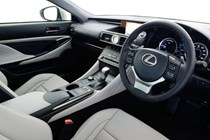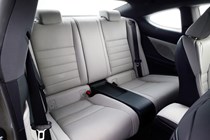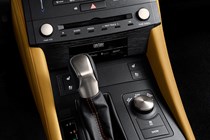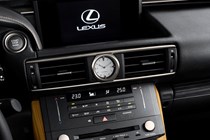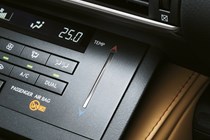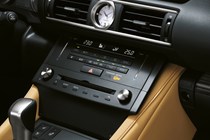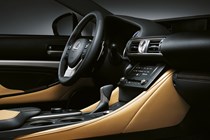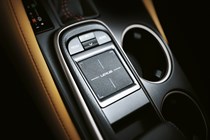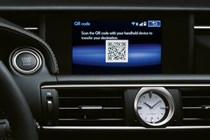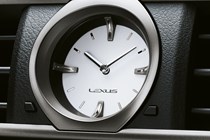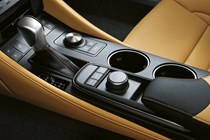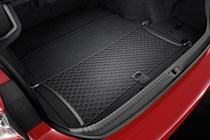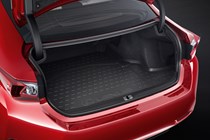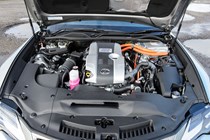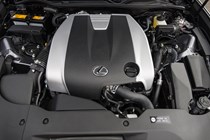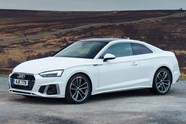
Lexus RC Coupe review
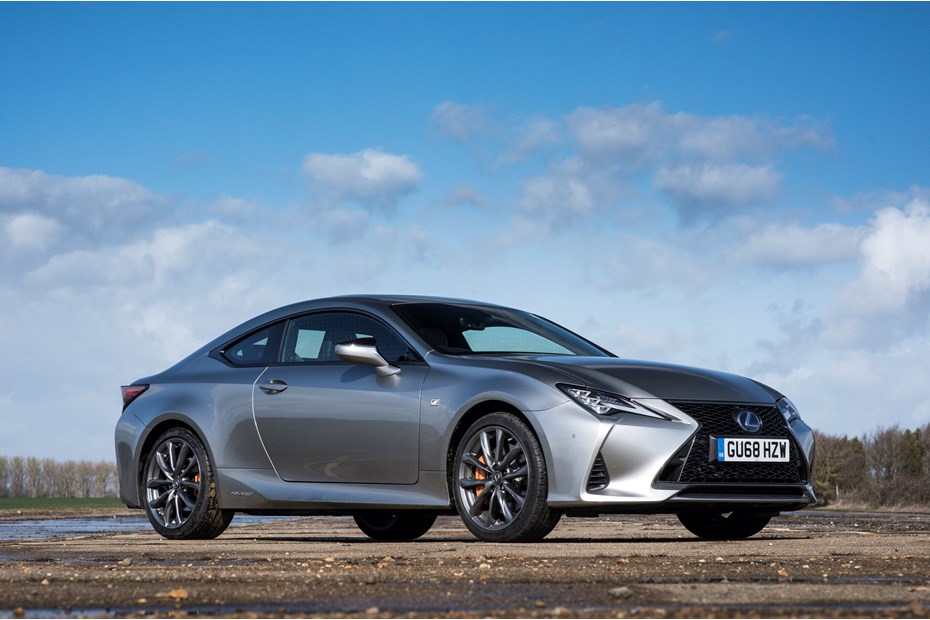
At a glance
| Price new | £36,995 - £69,120 |
|---|---|
| Used prices | £10,126 - £47,495 |
| Road tax cost | £25 - £600 |
| Insurance group | 31 - 45 |
Get an insurance quote with

|
|
| Fuel economy | 23.9 - 45.5 mpg |
| Range | 363 - 828 miles |
| Miles per pound | 3.5 - 6.7 |
| View full specs for a specific version | |
Available fuel types
Petrol
Hybrid
Pros & cons
- Head-turning styling means you’ll stand out in a crowd
- Interior quality and materials are top-drawer
- Smoothness and refinement outstanding at a cruise
- The only hybrid two-door coupe of its size
- Fiddly media system controls and dated graphics
- Interior is plush, but has a busy, button-heavy design
- Not the sharpest-driving coupe for your money
- Rear seats are more cramped than in other coupes
Lexus RC (15-20) rivals
Overview
In a market crammed with capable and desirable premium coupes, such as the Audi A5 Coupe, BMW 4 Series Coupe and Mercedes-Benz C-Class Coupe, if might be easy to overlook the Lexus RC.
And yet, it shouldn’t be – it has dramatic styling, comes with cutting-edge hybrid tech, and is sold by a company that’s legendary for its customer service and reliability.
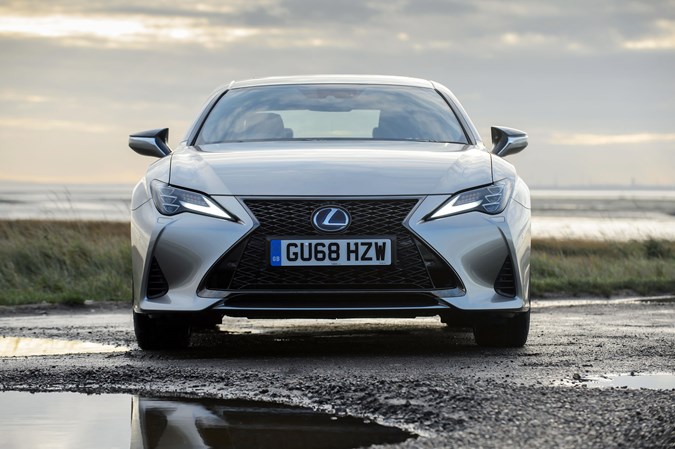
There’s just one engine option on offer in the regular range though – a petrol hybrid badged RC 300h – which makes the decision easier than it might be if you’re choosing from the sprawling range of models offered by Audi, BMW and Mercedes-Benz. But that’s no bad thing – just as long as you’re not looking for a diesel.
There’s also a fire-spitting Lexus RC F version that’s the firm’s answer to the Mercedes-AMG C 63, BMW M4 and Audi RS 5.
Lexus RC styling: sharp and eye-catching
Where to start on that score? There’s no denying that the RC’s bold appearance should make an impact in the company car park.
There’s a wide, aggressive interpretation of Lexus’s trademark spindle grille, menacing LED-equipped headlights, a bulbous bonnet and sleek lines that intersect each other along the RC’s flanks. It also helps that you can choose the RC in a range of vivid and attractive colours, and not just the usual white, grey or black (which you can have if you want).
Move up to the RC F, and things get even more exciting visually. Just one glance at the bulging bonnet, creased flanks and quad exhaust outlets is enough to tell you this car has enough attitude to go toe-to-toe with the BMW M4 and Audi RS 5. Even if Lexus only sells around 200 examples of the RC F in the UK each year.
Lexus RC 300h hybrid: efficient and economical
According to official figures, the hybrid is no slouch – it takes 8.6 seconds to reach 62mph from a standstill – and it offers attractive fuel economy at up to a claimed 57.6mpg. Consequently the RC 300h’s CO2 emissions are as low as 113g/km.
The RC F is something else entirely. Its naturally-aspirated V8 petrol, weighs in at a sizable 5.0-litre capacity, and develops 475hp, making it the most powerful V8 engine Lexus has ever made. It’s shared with the previous-generation IS F, but is Euro6 compliant and puts out CO2 emissions of 252g/km and combined economy of 26.2mpg.
The RC F gets from 0-62mph in 4.5 seconds before finishing its run at an electronically limited 168mph. You do have to work the car hard to get there though, as peak power doesn’t arrive until 7,100rpm and peak torque (530Nm) is only available from 4,800rpm.
Auto-only transmissions for the RC
The RC 300h has an automatic transmission as standard – a CVT specifically for the 300h. Lexus has tuned the RC more for comfort than sportiness, which explains why the hybrid version, with its smoother drivetrain and supple ride, is more satisfying than the RC 200t – a regular petrol version – that was previously available.
The RC F has an eight-speed automatic gearbox to help you take advantage of its power, though the box is slow to change down especially and can be less than smooth under full-throttle up-shifts. At least the glorious engine noise, of which only a minute percentage is piped into the cabin, makes the effort required of the driver seem worthwhile.
Lexus RC interior: Object lesson in quality
The interior is extremely well-built and is finished in some fine materials, with the softest of leather. All of the plastics look and feel expensive while the seats are extremely comfortable and supportive.
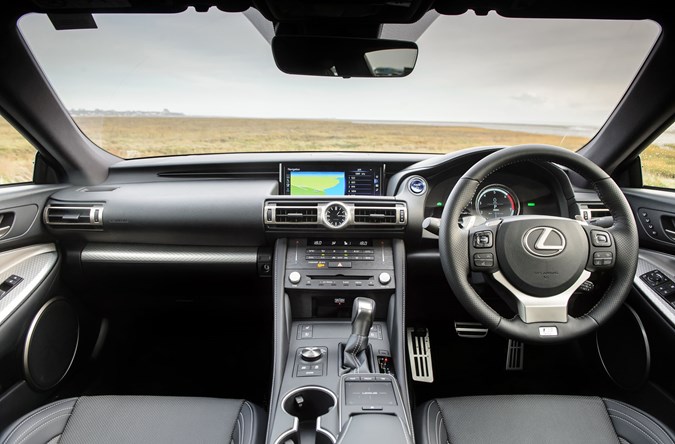
The rears are cramped, though – which is to be expected in a coupe such as this. The cabin owes much to the IS with the same dashboard fronting a cosier cabin. The back seat’s shaped for two with a storage facility between the chairs.
Lexus RC trim levels and equipment
Three specification levels are on offer – standard RC, sporty F Sport and luxurious Takumi. Whichever you choose you’ll find front and rear parking sensors, cruise control, a 10.3-inch infotainment screen, an electrically adjustable steering column, dual-zone climate control and LED head- and tail-lamps.
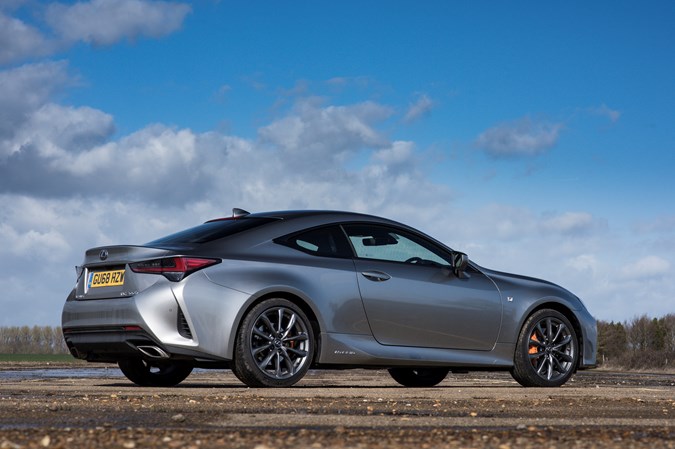
The RC F is incredibly well-equipped as standard; those leather seats are also electrically adjustable and both heated and cooled – choose the Carbon edition and leather is complimented by Alcantara. The sat-nav is controlled by a touchpad controller on the transmission tunnel.
A 10-speaker Pioneer sound system is fitted as standard to the RC F, and can be swapped for a premium Mark Levinson system with 17 speakers – both offer a system to improve the sound of compressed digital music files like MP3s.
Safety is taken care of with eight airbags, Lane Keep Assist, Blind Spot Monitor, Rear Cross Traffic Alert and Automatic High Beam headlights – while a Pre-Crash Safety system is available as an option.
Choose an RCF Carbon and along with the Torque Vectoring Differential, Mark Levinson Hifi and the Alcantara seats the car benefits from Carbon Fibre Reinforced Plastic (CFRP) bonnet, boot and roof panels to decrease weight.




